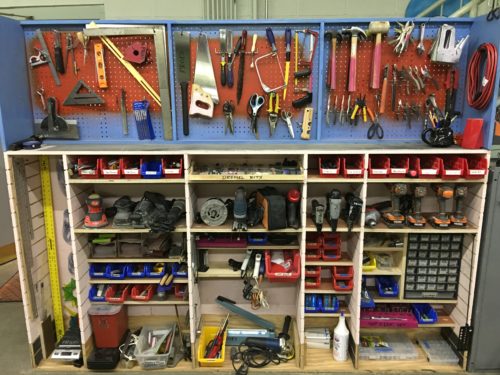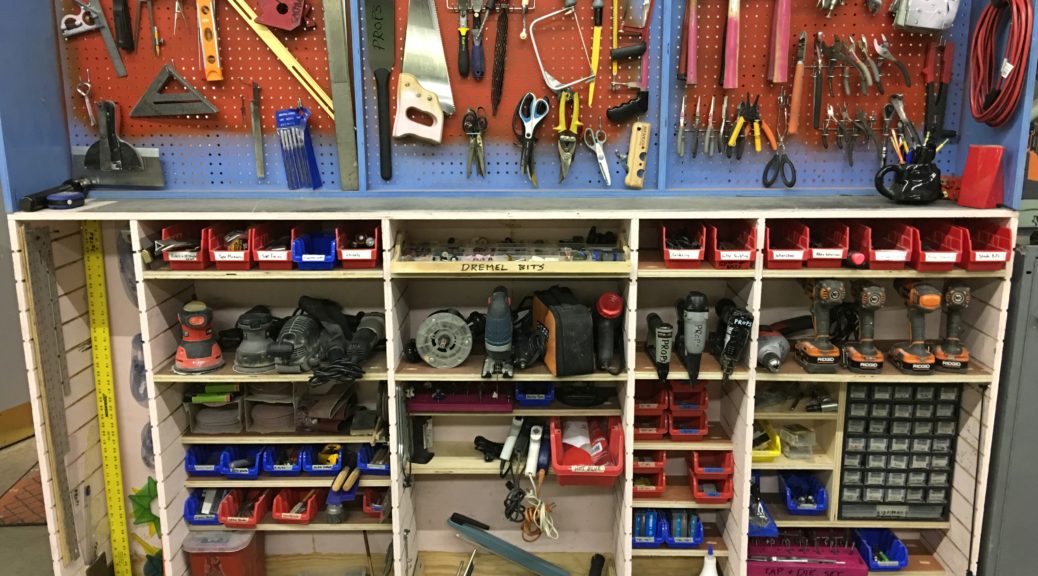Over the summer, while the theater was dark, I had some time to organize my shop and execute some larger projects. One area I focused on was my tool storage, which has always been a bit improvisational and haphazard.

The cabinet itself began life in the scene shop to organize their hardware and supplies. A few years ago, they removed it to build a better solution, so I snagged it for my own shop. I also added the pegboard along top.
This past summer, I tore out a lot of the shelving in the bottom and replaced it with more custom pieces. I prefer my tools and supplies to be visually “out in the open”; I find it difficult to deal with things in drawers or behind closed doors. My feeling is that “if I can’t see it, I don’t have it.”
Of course, securing the tools is another thing. I may add doors on the front to lock it at night, but during the day, I would still keep it open. My shop itself is kept secure, so I haven’t had things walk off with this kind of setup.
I like using pegboard to organize tools because it allows me to see what I have and it takes up very little floor space. For tools like saws, files, and rasps, it also prevents the edges from becoming dull and dinged, which is what happens when they are stored in a drawer and other tools are constantly thrown on top of them. I would probably use more pegboard if I could, but this was the largest piece I found in the shop.
The tools are roughly organized so that similar tools are kept together: measuring tools, cutting tools, assembly tools, etc. If you are looking for a mallet, and you find the hammers, you know the mallets will be close by. Accessories and consumables are also stored in close proximity to their tool; drill bits are near the drills, and sanding discs are near the orbital sanders.
Most of the smaller paraphernalia is kept in plastic bins, but I made some custom organizers for Dremel bits, router bits, and my tap and die set. Again, keeping router bits and taps in a bin would ding up the cutting edges as they rubbed against each other. Dremel bits just become a nightmare when you start mixing them together into one giant container.
For the future, I may add even more dividers so that the power tools all have their own “cubby”; it would be great to determine which tools are missing just by glancing at the cabinet and seeing an empty space. I may also add labels and trace out the outlines of the tools on the pegboard. Â I find its easiest to keep things clean if every item has a specific location that it returns to.
Do you want to share images of your tool storage? Shoot me an email, or leave a comment on my Facebook page!






I have worked in many different shops and have found that the most well-organized shops are also the ones which are most efficient. Thanks for sharing!
The tools are very important for us, they play an important role in our daily life. Without the tools, it would be very difficult for us to complete the repair and construction work.
The normal life of tools is around 8 to 10 years but it can be further increased if proper maintenance of tools is done. The procedure shared above looks very attractive and very impressive.
Thanks for sharing this important article.